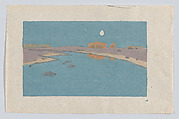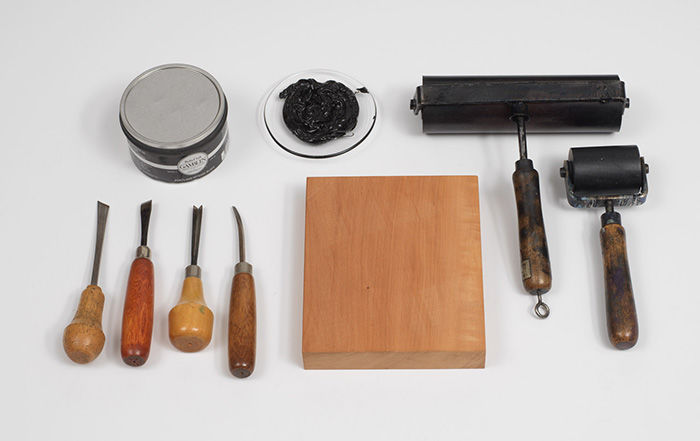Marsh Creek
Arthur Wesley Dow American
Not on view
A leader of the American Arts and Crafts movement, Dow’s advanced ideas concerning color and design are beautifully conveyed by his woodcuts. Born in Ipswich, Massachusetts, the artist studied tonalist painting in France for five years then returned to Boston in 1889. Fascinated by Ukiyo-e prints, Dow examined examples at the Museum of Fine Arts, together with Japanese printing equipment at the Smithsonian Institution. After mastering a multi-block process, he created forty compositions between 1891 and 1921, many printed in multiple variations with experimental inking. These works explore the expressive potential of color and, in 2016, the Museum acquired a significant group, including Marsh Creek. Exemplifying Dow's mature technique, no key-block was used in this print, and the landscape is formed from adjacent color zones. Printing the layers required great skill, and overlapping forms have been used to great effect. Thinly applied golden ink veils underlying blues and purples, with ripples scored into the wet ink -- a technique more common to watercolor than woodblock printing. Other variants of this subject use dark tones to suggest a moonlit scene, but the present example evokes bright twilight.
Due to rights restrictions, this image cannot be enlarged, viewed at full screen, or downloaded.


